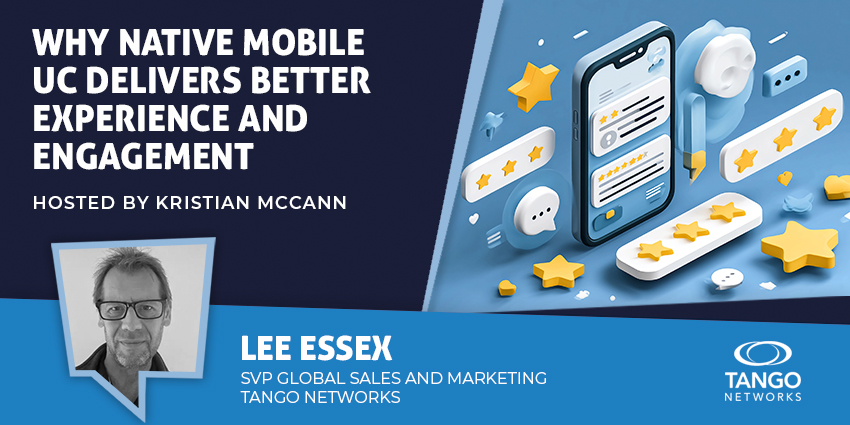Serving businesses in industries ranging from healthcare and financial services to tech companies, they are a vital part of many companies’ operations.
As such, many organizations put emphasis on trying to optimize customer experience in their contact centers.
Reducing wait times, training staff in product knowledge, and optimizing post-call summaries for ongoing improvements are all tactics deployed to do this.
However, all of these strategies and plans to keep the customer happy are contingent on one thing: is your contact center operational?
If a customer tries to call in but bottlenecks are throttling your contact center or it is at capacity, then no amount of staff training can help you.
Such a scenario may equally destroy any previous goodwill you had with a client, as a Zendesk 2025 finding found more than one-half of consumers may switch to a competitor after only one bad experience.
“Without regular, comprehensive stress tests, organizations risk unnecessary outages, degraded call quality, and lost business during these critical times,” Sam Melvin, Co-Founder of Voxology explained.
Stress testing your contact center should be as much a part of an organization’s customer service strategy as anything else.
If your contact center is the heartbeat of your customer experience, are you sure that it won’t skip a beat when it matters most?
Why Stress Testing Is Vital
Stress tests evaluate whether contact center infrastructure can handle anticipated load while maintaining acceptable quality standards.
Contact center setups rely on an ecosystem of vendors that provide the various components needed for a contact center setup. Although your current setup may be optimized and functionally operational, Melvin points out how “things change.”
“Your carrier and software providers make changes that you may or may not be privy to. Or you may have made some tweaks to your call flows or your data dip. We’ve seen issues pop up in lots of places,” he said.
Whether it is your network provider, your cloud host, carrier, or even the contact center itself, changes made in any layer may create a ripple effect in your otherwise functioning setup.
“Unless you’re the actual carrier connecting two of your own subscribers, like AT&T or BT, you’re relying on at least one other vendor, if not multiple. Therefore, you are subject to any issues or updates they make on their side,” Melvin said.
Because you cannot keep track of all these individual changes, nor how they might interact, stress testing is the only way to ensure your contact center continues to stay operational.
Equally, the problem created in the above example may not become obvious until placed under peak pressure.
“In a lot of industries, there are peak seasons, like in healthcare it may be during flu season, with insurance, it’s during those renewal times of the year,” Melvin explained.
Peak seasons can push communication systems to their capacity.
But in a system that hasn’t been stress tested, this won’t just be a case of longer wait times for customers; it could mean dropped calls, poor audio quality, and even a scenario where some customers cannot connect.
Unlike routine monitoring that confirms systems are operational, stress testing deliberately pushes systems to their breaking point to identify vulnerabilities before they impact real customers.
“Stress testing is all about capacity testing and making sure your team and your own infrastructure can handle the volumes you expect,” Melvin said.
The Business Case for Regular Stress Testing
Although a single stress test is a step in the right direction, equally important is the frequency with which you run them.
While some organizations view stress testing as a one-time project after a major update to their telecom stack, it can only truly be effective as a strategy when implemented as a regular practice.
“Stress testing regularly helps teams build courage and give them assurance they’ve got a stopgap.”
Without this validation process, teams must rely on hope, which, as Google’s Site Reliability Engineering team famously observed, “is not a strategy.”
Equally, stress testing provides essential protection against financial loss.
Customer acquisition costs continue to rise across industries, making customer retention increasingly valuable.
Thus, the financial case for preventing service failures during peak periods pales in comparison to the potential revenue loss from customer attrition following a major system failure.
Plus, stress testing can also give you key insights into your channel usage and your service with your vendor.
“Some customers have joked that they use stress tests just to keep their carrier honest and to make sure they are getting the capacity they’re paying for,” Melvin jested.
Stress testing may have fallen out of mind for many businesses since the transition to cloud-based systems. Yet, this is fueled by a false premise of a perfectly scaling cloud, according to Melvin.
“You know, there’s a myth that if you’re hosted in the public cloud you don’t need to run stress tests. It’s a fallacy,” Melvin said. “Just because you’ve moved to a cloud-based UC or CC system, it won’t necessarily perform and scale the way you expect. as though it always scales the way you expect.”
By switching from a reactive stance to a proactive one, you can better enable your company to scale with confidence.
“Regular stress tests free up the team to be able to make important changes and updates and upgrades to the system with confidence,” Melvin explained.
Bringing Confidence to Your Contact Centers
As contact centers evolve to incorporate AI, virtual agents, and omnichannel capabilities, the importance of stress testing only increases.
These technological advancements create additional layers of complexity and new potential points of failure that must be verified under load conditions.
“Sometimes during stress tests, you press up against an issue that you’ve got to resolve before you push up against the next one to get to your full capacity,” Melvin said.
Yet the iterative nature of stress testing drives continuous improvement across these evolving technologies to better prepare you for them.
Voxology’s StressTest enables organizations to conduct comprehensive, automated stress tests by simulating high volumes of synthetic calls-either through the public telephone network (PSTN) or directly to a SIP endpoint-allowing for both end-to-end and infrastructure-specific testing.
Its system can incrementally scale call volumes, monitor real-time performance via a dashboard, and detect issues such as latency, jitter, and audio degradation under load.
Automated reporting and call recordings provide actionable insights, while Voxology’s team further analyzes problematic calls, offering practical recommendations and best practices based on observed failures.
Its testing process is highly interactive, between customers and Voxology staff, collaborating live to adjust parameters, diagnose failures, and iterate on fixes, ensuring organizations can identify and resolve capacity bottlenecks before they impact real-world operations.
By implementing regular stress tests, like those offered by Voxology, organizations gain the ability to measure improvement over time, a critical capability as contact center technology continues its rapid evolution.
This pattern of continuous improvement, facilitated by regular testing, allows organizations to stay ahead of customer expectations rather than perpetually playing catch-up.
When competitors experience service disruptions during high-volume periods, companies with well-tested, resilient infrastructure can capture market share and establish a reputation for reliability that translates directly to customer preference and loyalty.
In a business environment where customer experience increasingly serves as the primary competitive battleground, the price of losing customers far outweighs the cost of keeping them.







